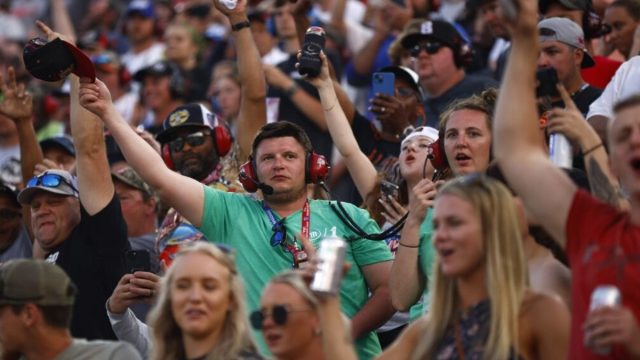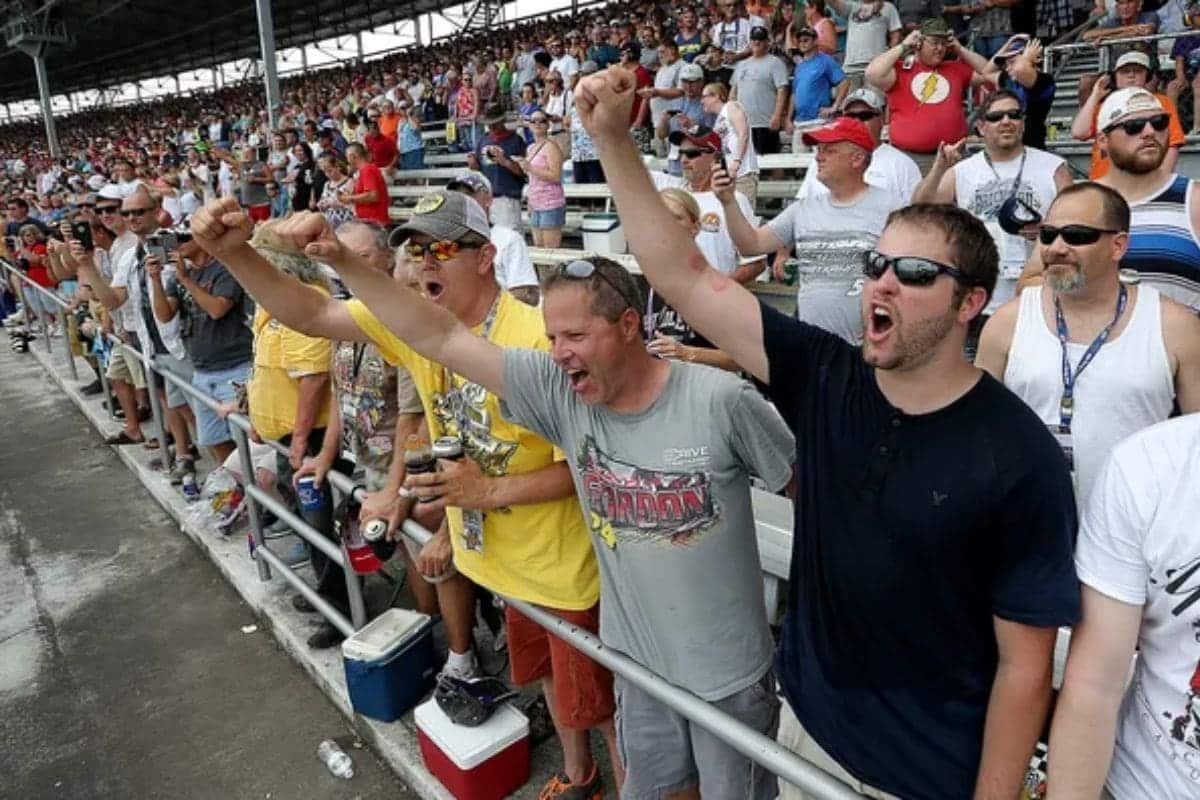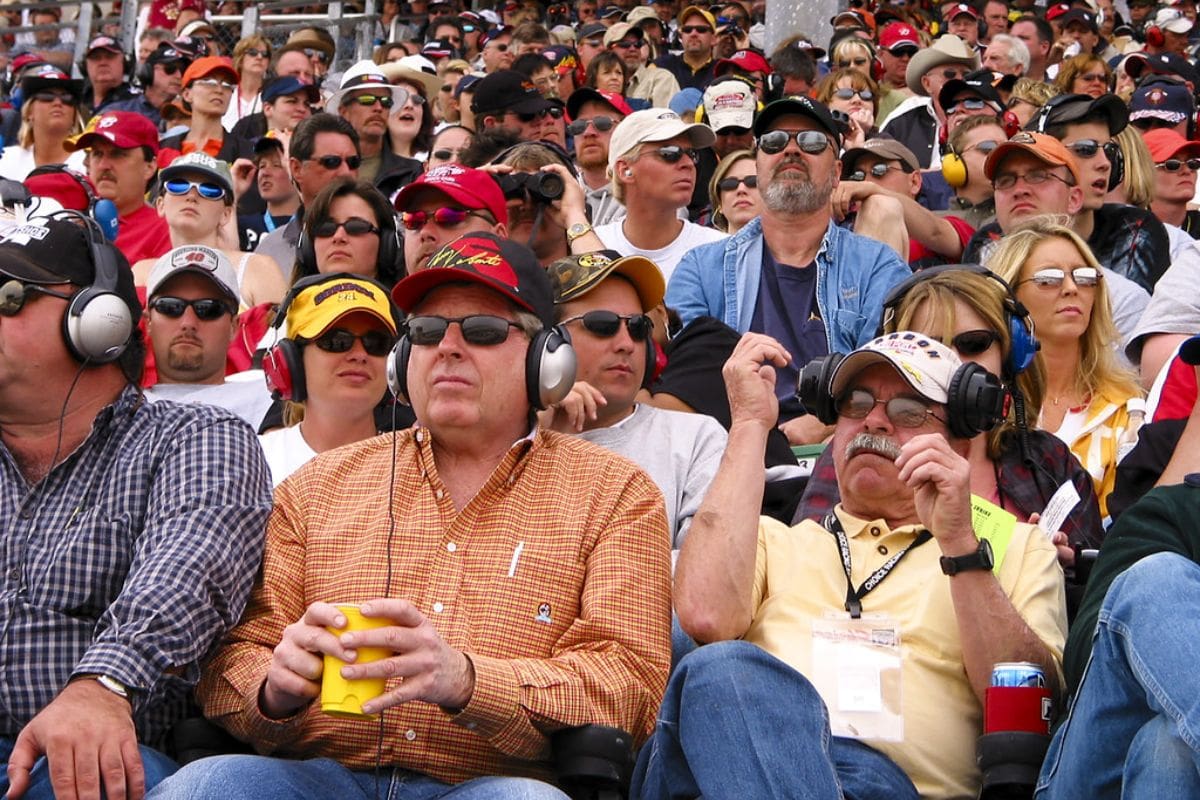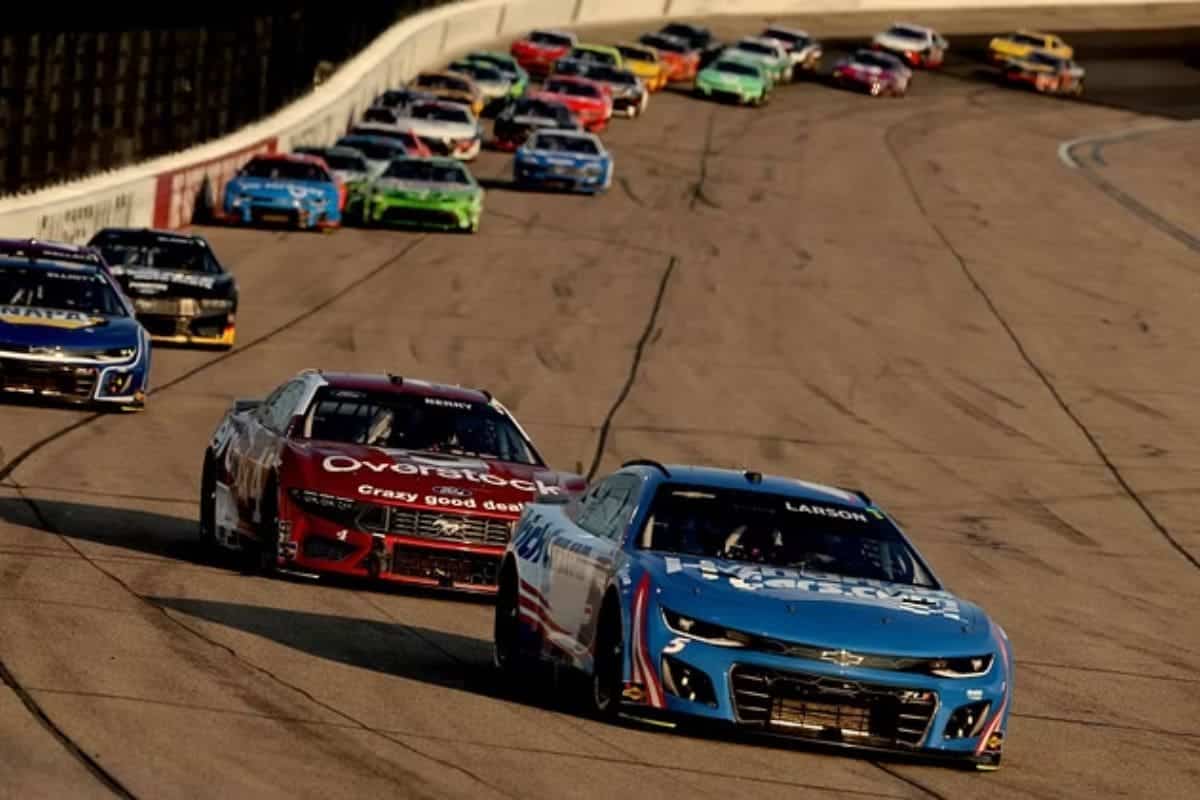Fans Roar as NASCAR Hits Brakes: Fans are increasingly vocal about their frustration with NASCAR’s handling of caution laps, particularly those triggered by weather-related threats. NASCAR’s policy of prioritizing caution over competition has led to prolonged interruptions, reducing viewer engagement and sparking critique. The lengthy caution periods not only heighten fan dissatisfaction but also create speculation about race outcomes and fairness. Critics argue that NASCAR’s decision-making processes lack urgency and transparency, further fueling the debate. With passionate fans demanding a more dynamic and fair racing experience, the tension between caution and competition continues to escalate, calling for a closer examination of NASCAR’s protocols.
Key Highlights
- Fans criticize prolonged caution laps due to rain threats, reducing NASCAR race excitement and disrupting viewer engagement.
- Tyler Reddick’s strategic positioning under caution periods sparks speculation about potential race outcomes and disruption to race dynamics.
- NASCAR’s caution lap policy faces scrutiny for prioritizing safety over competition, leading to fan frustration and perceived inefficiency.
- Prolonged caution periods during minor incidents raise concerns about NASCAR’s operational efficiency and decision-making speed.
- NASCAR must balance safety with race progression to address fan discontent and maintain viewer interest in high-adrenaline action.
Fans React to Caution Laps
Many fans expressed profound frustration on social media as they lamented the seemingly endless caution laps that overshadowed the race due to the persistent threat of rain. The sentiment was noticeable, with enthusiasts vocalizing their discontent over the disruptions that tainted the fluidity and excitement of the event. In a sport where excitement and speed are key, the long caution periods seemed to go against the true spirit of NASCAR.
Social media platforms were flooded with fervent reactions, as fans articulated their grievances in real-time. Tweets and posts ranged from exasperated calls for more decisive weather management to criticisms of the race experience as a whole under such conditions. The cacophony of voices revealed a shared sense of disenchantment, with many echoing the view that the race had been reduced to a monotonous procession, rather than the thrilling spectacle they had anticipated.
On lap 194 of the planned 301 laps, Elliott restarted in 11th place and Logano in 12th. However, Logano’s No. 22 Ford had difficulty turning in the first corner, causing contact with Elliott’s No. 9 Chevrolet. Both cars were damaged but continued racing farther back in the field.
Even though the crash required caution, the race could have resumed quickly. Instead, NASCAR opted for caution laps. Rain has disrupted numerous NASCAR races this season, and the weather forecast wasn’t favorable before today’s race. That’s why the schedule was adjusted to ensure the race could finish.
NASCAR’s new rule allowing teams to plan for inclement weather, especially focusing on how races are completed, teams now have the flexibility to adapt schedules and formats based on weather conditions.
NASCAR doesn’t race in the rain, but when weather isn’t a problem, they could maximize green-flag laps before bad weather forces them to stop. However, officials chose to use extra caution laps, which frustrated fans even more.
Rain possible next 10-15 minutes or so. pic.twitter.com/VUX8oNNBnK
— Bob Pockrass (@bobpockrass) June 23, 2024
Chase Elliott began the race from the pole position, while Joey Logano started sixth in Sunday’s USA Today 301. Before Logano made contact with Elliott’s No. 9 car, he radioed his No. 22 team, expressing concern that something in the right front of his car had broken, causing it to not turn properly.
Chase Elliott, who was leading in points before the event, finished 18th at New Hampshire. This ties him with his teammate Kyle Larson for the top spot. Logano, who was 15th in the standings and 6 points below the playoff cut-off, now moves to 13 points above the elimination line after finishing 32nd.
NASCAR’s Caution Lap Policy
Given the recent controversies, NASCAR’s caution lap policy has come under intense scrutiny, with critics arguing that the current protocols fail to adequately balance safety and the dynamic nature of the sport. At the core of the debate is the perception that NASCAR’s approach to caution laps, particularly during rain and thunderstorms, prioritizes caution over competition, thereby diluting the essence of racing.
One key element of this policy is the 30-minute delay triggered by lightning strikes within an 8-mile radius. While this rule is undeniably vital for ensuring the safety of drivers, teams, and spectators, its implementation often results in prolonged caution periods that leave fans disillusioned. This scenario played out vividly at Charlotte Motor Speedway, where persistent weather interruptions led to an extended series of yellow flag laps, much to the chagrin of fans eager for more on-track action.
“Rain coming NASCAR: MORE YELLOW FLAG LAPS.” – (FAN REACTION)
The balance between safety and maintaining the integrity of racing is a delicate one. NASCAR’s decision to extend caution periods in the face of adverse weather conditions, such as thunderstorms, is rooted in an abundance of caution. However, critics contend that the frequency and duration of these caution laps disrupt the flow of the race, leading to a fragmented and less engaging viewing experience.
While safety remains paramount, there is an increasing call for NASCAR to consider more subtle strategies that can safeguard participants and preserve the competitive spirit of the sport. Balancing these priorities is vital for the continued growth and enthusiasm surrounding NASCAR.
Fan Frustration with Caution Length
Fans’ mounting frustration with the excessive length of caution laps has become a noticeable source of discontent within the NASCAR community. While yellow flags are indispensable for ensuring safety on the racetrack, the recent incidents have sparked a dialogue on whether the time spent under caution is justified.
The issue lies in the fact that caution laps consume the original length of the race, detracting from the thrilling action that fans eagerly anticipate. This discontent is compounded when the apparent cause for the caution—such as minor tangles or spins involving one or two cars—does not seem to warrant an extended delay.
The situation escalates when debris, which necessitates a caution, is not visible on the racing surface. The lack of transparency and communication from NASCAR officials regarding these extended caution periods has only amplified the outcry from fans.
A poignant example of this frustration was captured in a Reddit comment that encapsulated the collective sentiment: “We should have been green 4 laps ago wtf.” This succinctly echoes the bewilderment and impatience felt by the audience.
Speculation on Race Outcome
The speculation surrounding the potential outcomes of the USA Today 301 race has intensified, particularly with Tyler Reddick assured to claim victory if the race had been halted due to inclement weather when the caution flag was waved. This hypothetical scenario has sparked intense discussions among fans and analysts, as Reddick’s strategic positioning at the front of the pack during the critical moment could have crowned him the winner under NASCAR’s rules for rain-shortened races.
Reddick’s aggressive driving and tactical expertise placed him in the lead just as Joey Logano and Chase Elliott’s collision triggered the caution. The subsequent 15 laps under caution, while the race conditions were evaluated, became a focal point for debates. Enthusiasts and experts scrutinized this interval, imagining a myriad of potential outcomes had the race been called off. The skies were threatening, and many believe that Reddick’s top-ranking position at that instant would have been solidified into an official victory, altering the championship landscape.
“Can we not run 15 laps under caution for 2 cars back on track? Or is the NASCAR team full of Reddick fans?” – (fan reaction)
Moreover, the prolonged caution period allowed for a detailed analysis of Reddick’s performance, highlighting his skill in capitalizing on chaotic race conditions. His ability to maintain composure and lead under challenging circumstances has not gone unnoticed, sparking discussions about his future potential and positioning within NASCAR’s elite.
“Dude I swear! It’s like they’re trying to hold out till the rain comes. It’s so annoying.” – (fan reaction)
The speculation about the race’s potential outcome highlights the complexities and unpredictable nature of motorsports, where weather, timing, and split-second decisions can significantly shift the narrative. For now, the ‘what-ifs’ surrounding the USA Today 301 race remain a thought-provoking topic, showing the intricate combination between skill, strategy, and circumstance that defines the sport.
Criticism of NASCAR’s Handling
NASCAR’s prolonged caution period following the minor two-car incident has sparked a wave of frustration and criticism from fans and analysts, who argue that the excessive delay, especially with impending weather, highlights a fundamental issue with the organization’s decision-making efficiency. This incident, which did not involve a significant wreck or a multi-car pile-up, has been perceived as an unnecessary extension of caution that has tested the patience of dedicated followers of the sport.
The decision to prolong the caution period is seen by many as symptomatic of a broader problem within NASCAR’s operational protocols. Vital to any motorsports is the balance between safety and the fluid progression of the race, and in this instance, many feel NASCAR has erred on the side of caution to a fault. A prominent fan’s exasperated social media outburst, “We’re taking forever to get back going after a 2 car spin, with weather on the way. They just never f***ing learn, let’s GO.” represents the growing discontent among fans who feel that the organization is failing to adapt to dynamic race conditions.
Analysts point out that such delays can diminish the overall excitement of the event, potentially alienating viewers who tune in for the high-adrenaline action characteristic of NASCAR. The sport’s ability to maintain viewer engagement is pivotal, and decisions that lead to prolonged interruptions can have lasting negative impacts.
As weather looms, the urgency to resume racing becomes paramount, yet NASCAR’s hesitation appears to reflect an underlying inefficiency in their decision-making processes. This criticism suggests that NASCAR needs to reassess and streamline its protocols to better balance safety with the continuity of the race.
News in Brief: Fans Roar as NASCAR Hits Brakes
The controversy surrounding NASCAR’s caution laps has ignited debate among fans, highlighting deep-seated frustrations with the current policy and its impact on race outcomes.
The extensive duration of caution laps has drawn significant criticism, with many questioning NASCAR’s handling of these interruptions.
This situation emphasizes the need for a reassessment of the caution lap policy to guarantee the integrity and excitement of the sport, thereby maintaining fan engagement and preserving the competitive spirit of racing.
ALSO READ: Fans Criticize NASCAR Over Iowa Blunder After Harvick’s Call Out



